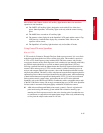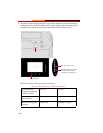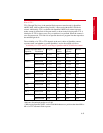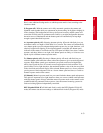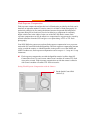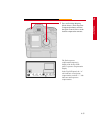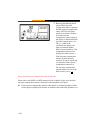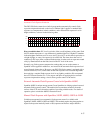
8-52
Suitability of A-TTL and TTL for the DCS 500 Series camera
The A-TTL and TTL flash systems were originally designed for film cameras. They rely
on the ability to monitor reflections from the film surface during exposure. This is a
practical system for a conventional camera, because film has a relatively matte surface
with reliably consistent reflection characteristics. However, digital cameras like the DCS
500 Series camera replace film with a CCD and glass cover plate which is much shinier
than film. The reflection characteristics of the CCD and glass plate are inconsistent
relative to film, with the result that flash exposures controlled by A-TTL and TTL tend to
be erratic and are often inaccurate. Although the DCS 500 Series camera is set up to be
compatible with Speedlites that feature A-TTL and TTL, we do not recommend the use of
these modes with this camera because of the limitations outlined above.
If you plan on using A-TTL or TTL with the DCS 500 Series camera, you may find it
necessary to use Flash Exposure Compensation for best results. The degree of
compensation may vary from shot to shot, especially with direct flash. We suggest
verifying the accuracy of each exposure on the built-in color LCD monitor.
Using Exposure Modes with E-TTL, A-TTL and TTL flash
The following table shows how aperture and shutter speeds are set according to the
camera’s shooting mode when used in E-TTL, FE Lock, FP flash, A-TTL and TTL with
EOS dedicated Speedlites:
*The camera automatically resets the shutter to 1/250 sec. if a faster speed is set, except in
FP flash mode.
Camera Mode Shutter Speed Aperture
Program AE (P) Automatically set
(1/60~1/250 and up)
Automatically set
Aperture-priority AE (Av) Automatically set
(30 sec. to 1/250 and up) *
Manually set
Shutter-priority AE (Tv) Manually set * Automatically set
Manual (M) Manually set * Manually set




